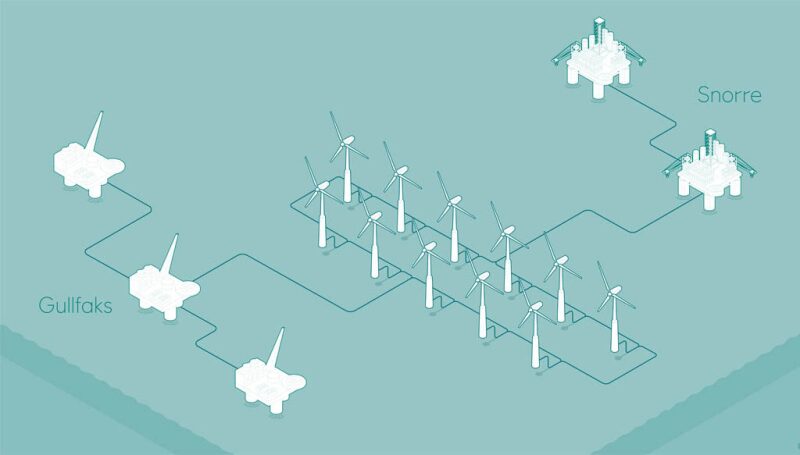Wood has agreed to a deal with Equinor to perform modifications to two platforms in the Norwegian North Sea (Snorre A and Gullfaks A) that are set to receive electric power from floating wind turbines.
As part of the 3-year contract, estimated to be worth more than £20 million, Wood will provide the topside modifications necessary for the Snorre A and Gullfaks A platforms to integrate the Hywind floating wind park with existing systems powering the facilities. The scope of work also includes equipment installation on the floating wind turbines and upgrades to the onshore control room in Bergen, Norway, that will remotely operate the wind farm.
“The Snorre A and Gullfaks A facilities will be the first oil and gas platforms to be powered by a floating offshore wind farm. We are proud to support Equinor on what is a flagship project for the North Sea’s energy transition journey. Wood is fully committed to applying our experience gained from decades of working in the region’s oil and gas industry to reduce the carbon intensity of offshore operations by modifying existing infrastructure,” Dave Stewart, CEO of Wood’s asset solutions business in Europe, Africa, Asia, and Australia, said in a statement.
The Hywind Tampen development, sanctioned by Equinor in October, is expected to reduce emissions by more than 200,000 tonnes/yr. The wind farm will consist of 11 turbines based on the operator’s Hywind technology, each with a capacity of 8 MW. Equinor said this will meet approximately 35% of the annual power demand of the 5 platforms at the Snorre and Gullfaks fields. It is scheduled to come on stream in late 2022, and Equinor said the project will extend the productive lives of the fields up to 20 years beyond their initial plan.

